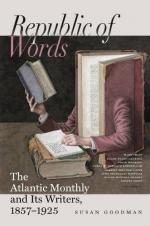Perhaps we might give the Eddaic Twilight of the Gods a more human and strictly European interpretation. May it not also foreshadow the great Armageddon struggle which is evidently impending between the Teutonic races in Western Europe, with their Protestantism, free speech, individual liberty, right of private judgment, and scorn of all thraldom, both material and mental, on the one side, and the dark powers of absolutism, repression, and irresponsible authority in church and state, on the other? How Russia, the type of brute-force, presses with crushing weight on intellectual Germany! Soon she will absorb the old kingdoms of Scandinavia,—to wit, Sweden, Norway, and Denmark. On the shores of Norway the ruler of the Sclavonic race will hang over Scotland and England, like a bird of prey about to swoop upon his victim. All despots and absolutists will array themselves under his banner or be his auxiliaries. The old hierarchies will be banded with him to crush out Protestantism, which is a plant of Teutonic growth. Old Asia, with her rancor and despotic traditions, recognizes in the Russian imperial rule a congenial rallying-point against the progressive and hated Anglo-Saxonism and Protestantism of the West. A decisive struggle is surely impending between freedom and absolutism, between the bigoted adherents of the old faiths and the nations that have cut loose from them. Perhaps this struggle may be prefigured in the old Northern myth of the Twilight of the Gods.
All the old mythic cosmogonies are strangely suggestive and full of mystic import,—that of Northern Odinism more than any other. In that dim Niflheim, for instance, with its well-springs of the waters of the upper world confusedly bubbling, and its metallic ore-veins, and dusk, vaporous atmosphere, whence issued the old Nibelungen heroes of the great Teutonic epos, there is much that is suggestive. May not one discover in this old cosmogonic myth a dim hint of the nebular hypothesis of creation, as it is called? Certainly, Niflheim, the Mistland, and Muspellheim, the Flameland, commingled together, would produce that hot, seething, nebulous fire-mist, out of which, the physicists say, was evolved, by agglomeration and centrifugal and centripetal attraction, our fair, harmonious system of worlds bounded by outermost Neptune, thus far the Ultima Thule of the solar system. Perhaps Asgard, translated from mythic into scientific language, means the Zodiacal Light, and the Bridge Bifroest, the Milky Way.
How curious, to trace in the grotesque mythic cosmogonies of India, Greece, and Scandinavia, modern geology, botany, chemistry, etc.,—the vast and brutal giants of the Eddas and other old mythic scriptures being recognized as impersonations of the forces of Nature! The old mythic cosmogonists and the modern geologists and astronomers do not differ amongst themselves so much, after all. The mythic physicists had personal agents at work, in place of




